#moma film archives
Text

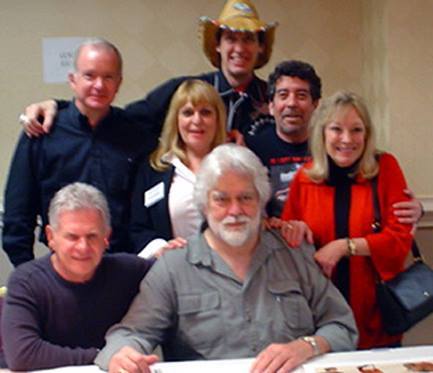
Shooting Daniel Pearl’s Infamous Dolly Shot (From Pam’s POV)
Or
How I Got Lucky In Spite Of Myself.
When I came on the set that morning in Quick Hill, Texas, our make-up artist Dottie was repairing my make-up. I looked out of the corner of my left eye, over at the swing where I knew I was supposed to sit for our next scene of Pam approaching the house. Perplexed, I noticed Daniel Pearl, our cinematographer, lying down on his stomach, hunched over his camera, UNDER the swing, and exactly where I was soon to park my posterior. I noticed Danny wasn’t moving. He was settled in. I asked Dottie as she was powdering my face, “Hey, Dottie, what’s Daniel doing under the swing?” She mumbled something similar to “Idunno…”, and quickly walked away.
They told me they were ready and where I was to sit. Huh?? No way. Yes, the stories are true. I freaked out, 😱 Pam and Tobe began to argue, me refusing to do the shot. Meanwhile, and totally Unbeknownst to me, this was immediately following a giant argument he’d just had with the money dudes, the investors, who didn’t want him to do this new shot that Daniel had come up with the night before, at all. They were ranting at him, telling him that they HAD to stick to the storyboard. .. or else (btw, dpearldp tells that delicious story on his IG - link below). Well, I had No Clue what it was either. I was protecting my cheeks… if you read me. Chewing on his cigar stub, and none too happy with his troublesome actress playing ‘Pam’, Tobe had had enough and said, “Aw, goddamnit, Teri, we’re gonna shoot all around it!!!”
Hmmmm, I’m thinkin’, ‘shoot-all-around-it’? Just what the hell does that mean? Anyway, I shut up and sat down, however, remaining highly, highly suspicious. I later learned that everyone, except me, was in on the tracking shot.
All I could think of was my mother 😲 O.M.G. (who was unsupportive at best of my chosen career) and my Aunt Gerry, who were both super-duper religious. I could literally picture them coming unglued when they saw it. Before it was released a year later, I dreaded watching myself on screen and THAT scene, having never seen dailies, I was haunted by the thought of watching it.
When it was released in October ’74, I was living in Dallas and drove with a friend to see it at a Saturday matinee in Tomball, TX, along with 300 screaming kids. When the scene started, my eyes were covered 🫣 I watched through my fingers, scared to death, and NOT of Leatherface. There, up on the screen, in CinemaScope and vivid Technicolor, were my cheeks in those red shorts… O.M.G. 🥶🥵
They certainly did "shoot all around it"!!! The irony of all my worry, neither one of them ever saw it. 😂
That scene has been taught in directing classes across the world for decades, and the 1974 film is held in the film archives of MoMA, The Smithsonian, and The Academy /Oscars.org.
MoMA recently announced a weeklong celebration the 50th anniversary of The Texas Chainsaw Massacre August 8-14, when members of the film’s creative team will join to discuss The Texas Chainsaw Massacre’s production and legacy.
How fortunate we are.
As many of you know, I didn’t come out of anonymity as 'Pam for ’35 years, till March 2008, when, Bill ‘Kirk’ Vail and I both first appeared at a humongous Cherryhill, NJ, Monster-Mania Convention.
Cut to 2008 when my sweet Aunt Gerry was in her 90's, I went to visit her in Arkansas at her apartment in Peachtree Village for a few days, and I told her, "Aunt Gerry, did you know I'm famous?" She said, "You are??" I said, "I certainly am." 😎 I got out my Mac, opened it to FB and showed her the shot above. She giggled and smiled. She loved it! We enjoyed a really good laugh together.💞😂
Tobe and Kim had apparently seen my picture in the Austin American Statesman for a play I was doing with Frank Sutton (Gomer Pyle's Sargent) at @Mary Moody Northern Theater. Somehow for many years, I always remembered my eyes were closed in the Statesman picture. When I recently looked at the picture, my eyes were open and it was Frank Sutton's and the corpse of the dead priest that were closed. 😂 Kim Henkel had called the theater and our director, Ed Mangum, gave me the message when I came in for rehearsals that afternoon. I was to return their call.
WHO KNEW??? Certainly, none of us!
🎥 Follow our amazing cinematographer, Daniel Pearl's 50-year career in his posts and stories and get his POV on filming TCSM '74 scenes
Instagram: @dpearldp https://www.instagram.com/p/CvtejukgJIP/
DP's website: danielpearldp.com/
#fortunate#grateful#TheRestIsHistory#thetexaschainsawmassacre#marilynburns#leatherface#horror#art#teri mcminn#trailblazers#bill vail#ed guinn#gunnar hansen#ed neal#john dugan#allen danziger#danielpearl dp#ted nicholou#wayne bell#moma film archives#smithsonean film archives#academy film archives#paul partain#bob burns#jmichael mcclarey#Kim Henkel#Tobe Hooper#linn sherwitz
5 notes
·
View notes
Text
Jerome and Nathaniel will be celebrated at MoMA and Anthology Film Archives this month of May.
This ten program mini retrospective is to celebrate the publishing in English of a new book on the early years of their filmmaking titled Illuminated Hours, The Early Cinema of Nathaniel Dorsky and Jerome Hiler.
There will be seven hosted in person programs in New York at MoMA followed by three in person shows at Anthology Film Archives. This selection of films will open with Jerome Hiler’s slide lecture, Cinema Before 1300. The emphasis will both be on the early formative explorations and a selection of their later work from the last six years or so. Many new films will be screening in NY for the first time.
The series is online here; MoMA and Anthology Film Archives will be finalizing their screening schedules and updating their calendar pages.

Nathaniel on the left, 1944, with his grandfather in the Bronx Botanical Gardens. Jerome on the right with his godfather, 1944, Jamaica, Queens
MoMA calendar link
Anthology Film Archives link
Illuminated Hours: The Early Cinema of Nathaniel Dorsky and Jerome Hiler, by Francisco Algarín Navarro & Carlos Saldaña. English edition managed and edited by Nick Hoff. ISBN: 978-8-4940-9766-9
.
#nathanieldorsky#jerome hiler#MoMA#anthology film archives#illuminated hours#nathaniel dorsky#film screening#film shows#personal history and photos#in person#retrospective
1 note
·
View note
Text
4K Ultra HD Review: Basket Case
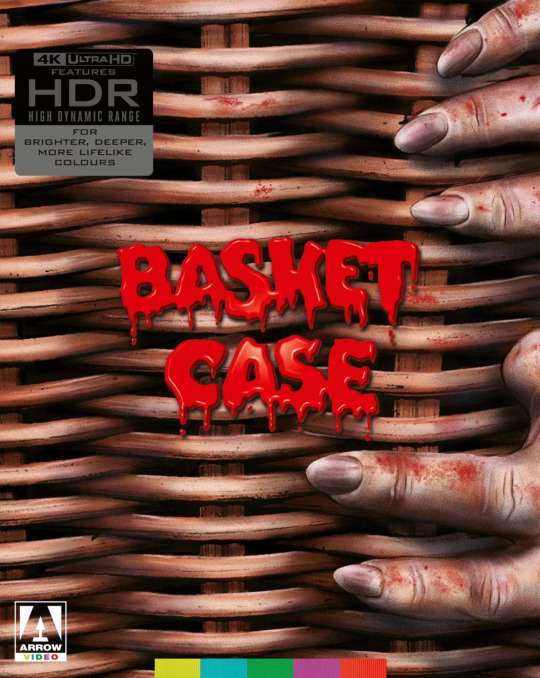
Unlike most "prestigious" organizations dedicated to the arts (I'm looking at you, Academy of Motion Picture Arts and Sciences), the Museum of Modern Art doesn't ignore the existence of genre fare. Nevertheless, there's something surreal about seeing "This film is from the collections of The Museum of Modern Art" at the start of Basket Case, a sleazy exploitation picture shot on 16mm over the course of a year for under $35,000.
The 1982 film follows Duane Bradley (Kevin VanHentenryck), who carries around his formerly-conjoined twin brother, a deformed, fleshy menace named Belial, in a wicker basket. While Duane intends to get revenge on the medical professionals who performed their unwanted separation surgery, Belial indiscriminately kills anyone who opens the basket like a malevolent jack in the box.

It's clear from the start that some sort of creature is contained within the basket, but writer-director Frank Henenlotter (Frankenhooker, Brain Damage) smartly allows the tension to build before revealing Belial in all his glory at the end of the first act. There's no mistaking it for anything but inanimate rubber (save for a primitive stop-motion sequence), but its blood-curdling screams give it life. Special effects artists Kevin Haney and John Caglione Jr. both won Oscars for Best Makeup — for Driving Miss Daisy and Dick Tracy, respectively — less than a decade removed from Basket Case.
MoMA's 4K restoration of Basket Case's original 16mm AB negative reels arrives on 4K Ultra HD with Dolby Vision (HDR10 compatible) and original uncompressed PCM mono audio via Arrow Video. Importantly, the restoration presents the film in newfound clarity while preserving the '80s NYC grime inherent to the film. The limited edition set comes with reversible artwork, a double-sided fold-out poster, and a booklet with writing on the film by horror historian Michael Gingold and a Basket Case comic strip by Martin Trafford, all housed in a slipcase featuring artwork by Sara Deck.
While no new special features were produced for the 4K, the plethora of existing materials including cover every conceivable aspect of the film. Henenlotter and VanHentenryck's breathless commentary from Arrow's 2017 Blu-ray doubles as a low-budget film school, from reusing sets to dumpster diving for decor. An archival track from Something Weird's 2001 DVD with Henenlotter, producer Edgar Ievins, actress Beverly Bonner, and Basket Case 2 production assistant Scooter McRae repeats most of the insight, but it's fun to hear their rapport.
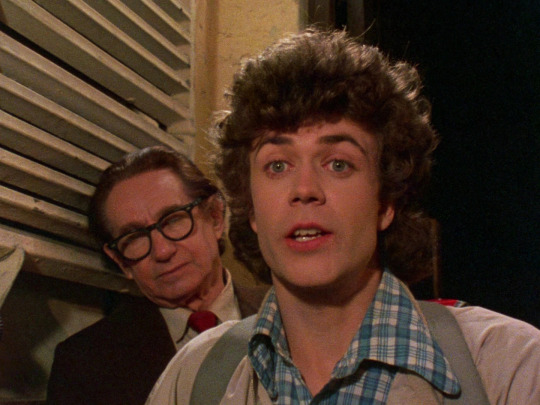
Interviews are ported over with VanHentenryck, who discusses his cerebral approach to playing the character; Bonner, who wrote and starred in a play examining where her character might be 30 years after Basket Case; Florence and Maryellen Schultz, Henenlotter's identical twin cousins who play nurses in the film and share his unique sense of humor; and legendary film critic and The Last Drive-In host Joe Bob Briggs, whose campaign to host the film's drive-in premiere saved it from being cut by its distributor.
A joke interview with Henenlotter features the filmmaker portrayed by Albert Cadabra, a sideshow performer who edited Henenlotter's Bad Biology, in the nude. The Latvian Connection explores four crucial members of the Basket Case team of Latvian descent: Ievins, associate producer/effects artist Ugis Nigals, casting director/actress Ilze Balodis, and Belial performer Kika Nigals. What’s in the Basket? is a 78-minute documentary produced by Severin Films in 2012 covering the Basket Case franchise with cast and crew.
Three short films are featured: Basket Case 3½, an 8-minute mockumentary from 2017 in which Henenlotter interviews "Duane Bradley" (VanHentenryck) about the events of Basket Case; Slash of the Knife, Henenlotter's 1976 short film that ultimately lead him to make Basket Case, with optional commentary by Henenlotter and playwright Mike Bencivenga and outtakes; and Belial’s Dream, a 2017 stop-motion animated short by Robert Morgan (who just made his feature debut with Stopmotion), accompanied by its own brief making-of featurette.

Other extras include: the MoMA's 2017 restoration premiere introduction and Q&A with Henenlotter, VanHentenryck, Bonner, the Schultz twins, and Ugis Nigals; The Frisson of Fission, a video essay by film historian Travis Crawford exploring the history of conjoined twins and "freaks" in cinema; a 2011 filming location tour with Henenlotter and rapper R.A. The Rugged Man (who co-wrote Bad Biology) explore the filming locations; outtakes; five image galleries (promotional stills, behind the scenes, ephemera, advertisements, home video releases); three trailers; a TV spot; and two radio spots.
Henenlotter didn't set out to make a cult film — in fact, he didn't think anyone would ever see his feature debut — but that's what he accomplished with Basket Case. Shot on location in New York City, the picture doubles as a time capsule of a seedy version of Times Square that no longer exists; one littered with drug dealers, sex workers, and porno theaters. While the sequels would lean more into the comedy, the original film balanced its camp with well-placed shocks.
Basket Case will be released on 4K Ultra HD on April 30 via Arrow Video.
#basket case#frank henenlotter#horror#80s horror#1980s horror#arrow video#review#article#dvd#gift#joe bob briggs#sara deck#80s movies#1980s movies#exploitation
21 notes
·
View notes
Text
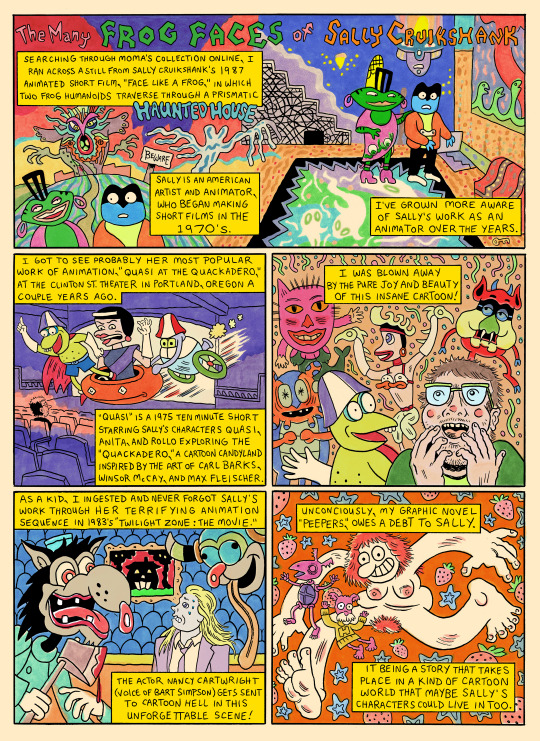

"The Many Frog Faces of Sally Cruikshank"
“What I like about animation is you can get a kind of ecstatic energy from watching it,” says Portland, Oregon–based cartoonist Patrick Keck. For this month’s Drawn to MoMA, he created a tribute to the animator and artist Sally Cruikshank, whose work has influenced his own. Author of the graphic novel Peepers and the comics collection Little Tomb, Keck got the idea for this story when he came across a still from one of Cruikshank’s films while searching through MoMA’s archives. “What inspired me about this story in particular is the feeling of interconnectedness that happens when I do some research about an artist I’m interested in, and find all these points that connect back to me or other artists I admire. I find some comfort in that.”
Created for @themuseumofmodernart's Drawn Together series:
Check out Sally Cruikshank's films here:
Check out Sally Cruikshank’s original art for sale here:
#patrickkeck#comics#sally cruikshank#museum of modern art#animation#twilight zone: the movie#quasi at the quackadero#face like a frog#peepers#fantagraphics#sesame street#from your head
12 notes
·
View notes
Text

Joseph Cornell is one of the most significant American artists of the 20th century. His work is highly visible in the world's most prestigious galleries, including the Tate Modern and MOMA. His famous boxes and his collage work have been admired and widely studied. However, Cornell also produced an extraordinary body of film work, a serious contribution to 20th-century avant-garde cinema, and this has been much less examined. In this book, Michael Piggott makes the case for the significance of Joseph Cornell's films.
Joseph Cornell Versus Cinema : Free Download, Borrow, and Streaming : Internet Archive
2 notes
·
View notes
Text
I just found this incredible resource listing all the known silent film adaptations of A Tale of Two Cities! Here is that list:
A Tale of Two Cities (USA 1908)
Director: [not known]
Production Company: Selig
Cast: [not known]
Length: 1000ft
Archive: Lost
A Tale of Two Cities (USA 1911)
Director: William Humphrey
Production Company: Vitagraph
Cast:
• Maurice Costello (Sydney Carton)
• Norma Talmadge (Lucie Manette)
Length: 3021ft
Archive: BFI, MOMA, UCLA
Availability: Grapevine Video DVD-R
A Tale of Two Cities (USA 1917)
Director: Frank Lloyd
Production Company: Fox
Cast:
• William Farnum (Charles Darnay / Sydney Carton)
• Jewel Carmen (Lucie Manette)
• Charles Clary (Marquis St. Evrémonde)
• Rosita Marstini (Madame Defarge)
Length: 7 reels
Archive: UCLA
The Birth of a Soul (USA 1920)
Director: Edwin L. Hollywood
Production Company: Vitagraph
Cast:
• Harry T. Morey (Philip Grey/Charles Drayton)
• Jean Paige (Dorothy Barlow)
Length: 4986ft
Archive: Lost
Note: Loose adaptation in American setting
A Tale of Two Cities (Tense Moments with Great Authors) (UK 1922)
Director: W.C. Rowden
Production Company: Master
Cast:
• J. Fisher White (Dr. Manette)
• Clive Brook (Sydney Carton)
• Ann Trevor (Lucie Manette)
Length: 1174ft
Archive: Lost
The Only Way (UK 1926)
Director: Herbert Wilcox
Production Company: Herbert Wilcox
Cast:
• John Martin Harvey (Sydney Carton)
• Madge Stuart (Mimi)
• Betty Faire (Lucie Manette)
• J. Fisher White (Dr. Manette)
Length: 10075ft
Archive: BFI
I will reblog this with a link to the source!
#A Tale of Two Cities#AToTC#Dickens#classic literature#adaptations#i have spent the last almost hour trying to find the 1926 one that I either didn't know or forgot existed#because I've always wanted to see Sir John Martin-Harvey's portrayal and have lamented that it was only theater#well turns out I WAS WRONG he did a movie too and now i'm furious#because it's NOT LOST! I just can't Find it anywhere on the Internet except for this one place that is not only only available in the UK#but doesn't even accept registration anymore🤡 but I think it's still There... taunting me#so...anyone up for a challenge?
5 notes
·
View notes
Text
MUSEUM OF MODERN ART (MoMA)

The Museum of Modern Art connects people from around the world to the art of our time. We aspire to be a catalyst for experimentation, learning, and creativity, a gathering place for all, and a home for artists and their ideas.
In the late 1920s, three progressive and influential patrons of the arts, Lillie P. Bliss, Mary Quinn Sullivan, and Abby Aldrich Rockefeller, perceived a need to challenge the conservative policies of traditional museums and to establish an institution devoted exclusively to modern art. They, along with additional original trustees A. Conger Goodyear, Paul Sachs, Frank Crowninshield, and Josephine Boardman Crane, created The Museum of Modern Art in 1929. Its founding director, Alfred H. Barr, Jr., intended the Museum to be dedicated to helping people understand and enjoy the visual arts of our time, and that it might provide New York with “the greatest museum of modern art in the world.”
The public’s response was overwhelmingly enthusiastic, and over the course of the next 10 years the Museum moved three times into progressively larger temporary quarters, and in 1939 finally opened the doors of the building it still occupies in midtown Manhattan. Upon his appointment as the first director, Barr submitted an innovative plan for the conception and organization of the Museum that would result in a multi-departmental structure based on varied forms of visual expression. Today, these departments include architecture and design, drawings and prints, film, media and performance, painting and sculpture, and photography. Subsequent expansions took place during the 1950s and 1960s, planned by the architect Philip Johnson, who also designed The Abby Aldrich Rockefeller Garden. In 1984, a major renovation designed by Cesar Pelli doubled the Museum’s gallery space and enhanced visitor facilities.
The rich and varied collection of The Museum of Modern Art constitutes one of the most comprehensive and panoramic views into modern art. From an initial gift of eight prints and one drawing, The Museum of Modern Art’s collection has grown to approximately 200,000 paintings, sculptures, drawings, prints, photographs, media and performance art works, architectural models and drawings, design objects, and films. MoMA also owns approximately two million film stills. The Museum’s Library and Archives contain the leading concentration of research material on modern art in the world, and each of the curatorial departments maintains a study center available to students, scholars, and researchers. MoMA’s Library holds over 320,000 items, including books, artists’ books, periodicals, and extensive individual files on more than 90,000 artists. The Museum Archives contains primary source material related to the history of MoMA and modern and contemporary art.
The Museum maintains an active schedule of modern and contemporary art exhibitions addressing a wide range of subject matter, mediums, and time periods, highlighting significant recent developments in the visual arts and new interpretations of major artists and art historical movements. Works of art from its collection are displayed in rotating installations so that the public may regularly expect to find new works on display. Ongoing programs of classic and contemporary films range from retrospectives and historical surveys to introductions of the work of independent and experimental film- and video makers. Visitors also enjoy access to bookstores offering an assortment of publications, and a design store offering objects related to modern and contemporary art and design.
The Museum is dedicated to its role as an educational institution and provides a complete program of activities intended to assist both the general public and special segments of the community in approaching and understanding the world of modern and contemporary art. In addition to gallery talks, lectures, and symposia, the Museum offers special activities for parents, teachers, families, students, preschoolers, bilingual visitors, and people with special needs. In addition, the Museum has one of the most active publishing programs of any art museum and has published more than 2,500 editions appearing in 35 languages.
CURATORIAL DEPARTMENTS
The MoMA is organized around six curatorial departments: Architecture and Design, Drawings and Prints, Film, Media and Performance, Painting and Sculpture, and Photography.
The MoMA's holdings include more than 150,000 individual pieces in addition to roughly 22,000 films and 4 million film stills.
COLLECTION HIGHLIGHTS

Vincent van Gogh The Starry Night, Saint Rémy (June 1889)

Pablo Picasso Les Demoiselles d'Avignon, Paris (June-July 1907)

Salvador Dalí The Persistence of Memory (1931)

Piet Mondrian Broadway Boogie Woogie (1942–43)

Andy Warhol Gold Marilyn Monroe (1962)

Andy Warhol Campbell's Soup Cans (1962)

Jackson Pollock One: Number 31, 1950 (1950)

Gustav Klimt Hope, II (1907-08)
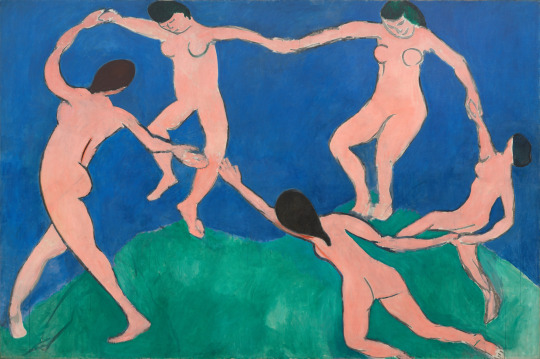
Henri Matisse Dance (I), Paris, Boulevard des Invalides (early 1909)

Claude Monet Water Lilies (1914-26)
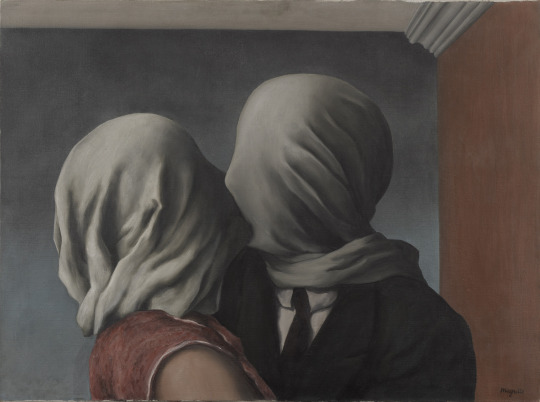
René Magritte The Lovers, Paris (1928)

Roy Lichtenstein Drowning Girl (1963)
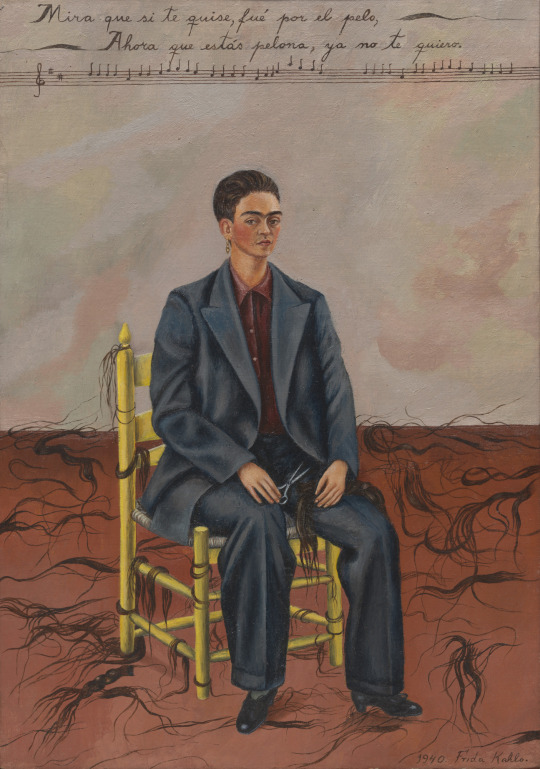
Frida Kahlo Self-Portrait with Cropped Hair (1940)

Henri Rousseau The Dream (1910)

Jean-Michel Basquiat Untitled (1981)

Paul Cézanne The Bather (c. 1885)

Francis Bacon Painting (1946)
1 note
·
View note
Text
Art Studio 2 Research: Potential inspiration for the additional sculptures
Jane Gavan and Jacky Redgate's feedback on Organic Space: "Well done, superb sound work! The visual imagery was poetic - theoretical underpinnings tremendous and outstanding commitment. A great research project and methodology around the subject of soundscape ecology and engaging with fieldwork and trips.
The final chosen looped 3 sequences are still being realised but can be refined in Semester 2. The direction is for shorter experiential 'narrative sequence'. The sounds of the body is the last one yet unrealised. There is a lot to explore and develop how you will install your work for Semester 2, including sculptural possibilities, which wasn't realised yet in Semester 1.
Push the sculptural and installation potential of your work.
All the best for Semester 2!
Jacky and Jane"
My thoughts from the feedback:
What about sculptures that can be interacted with to 'make sound'? (Perhaps leading the audience into the main exhibition room) - This will be addressed in this post and in future documentation.
Colours and shapes could mirror some of the animated forms/textures in the short film (and maybe other things in nature). - This will also be addressed in this post and in future documentation.
The soundscape in the 'terrestrial segment' of the short film needs to be explored/refined further, as does the overall installation and narrative sequence. - This will be addressed in future documentation.
Huaco Silbador (the Peruvian whistling vessel)
Created by various cultural groups in Peru from 500BCE to the 1500s.
The vessels were modelled after birds, other animals, or people.
Two different types: one that is single-chambered and another that is double-chambered.
You could either blow into it (both single-chambered and double-chambered) or fill it with water and tilt it back and forth (double-chambered). Both actions are demonstrated in the videos and diagrams below.
IDEA 1: Sculptures resembling the appearance of the environments/creatures making the sounds.
IDEA 2: Hollow interior to produce the sound?
youtube
youtube


Row 1: Ceramic whistling bottle - Muscovy (date unknown, AMNH Collection), Whistling bottle depicting maize deity (900-1400CE, National Museum of the American Indian)
Row 2: Double whistling bottle with jaguar figure (100-700CE, National Museum of the American Indian), Double-chambered ceramic whistling vessel - camelid/llama (date unknown, Smithonian National Museum of Natural History)
Row 3: Double-chambered ceramic whistling vessel - macaw with fruit (200BCE-600CE, Museo Larco)
Row 4: Monkey ceramic whistling bottle (200BCE-600CE, Museo Larco)
Row 5: Jaguar Whistling Jar (500-900CE, The Met Collection)
Row 6: Whistling Jar (200BCE-600CE, The Met Collection), Double-bodied ceramic whistling bottle - bat and spondylus shell (date unknown, AMNH Collection)
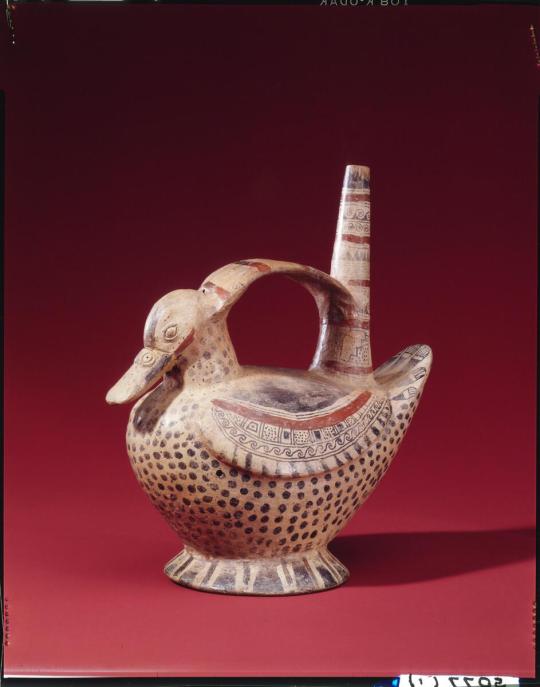

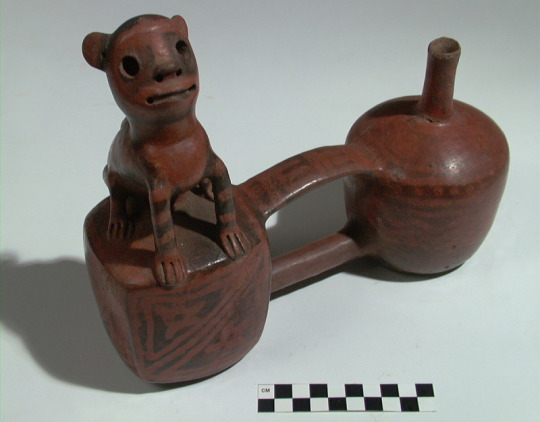
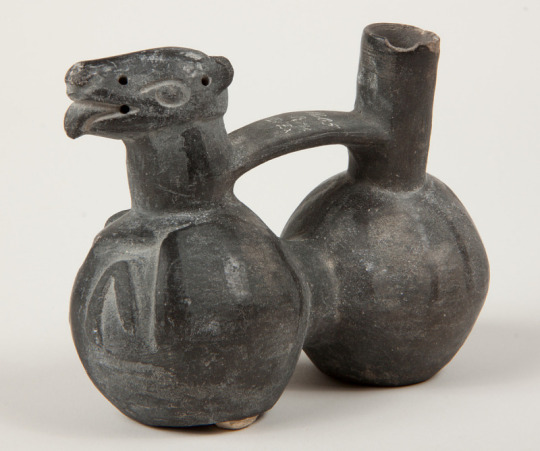

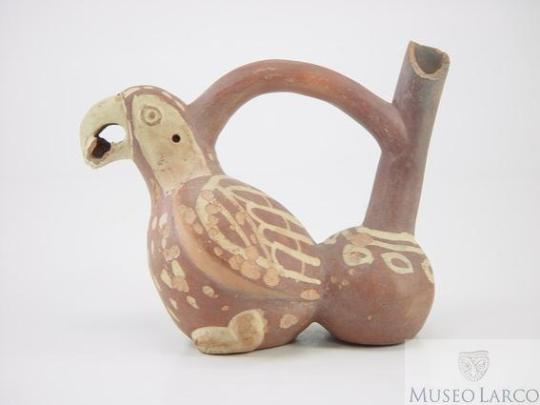
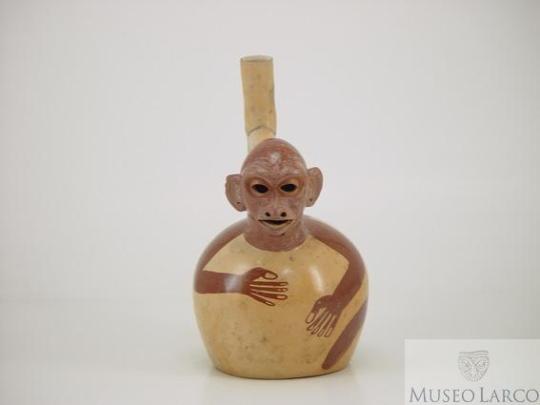
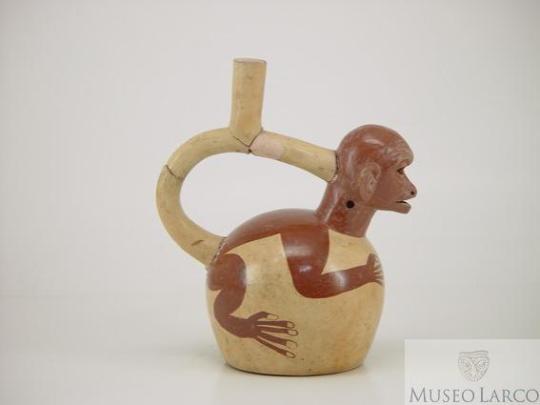

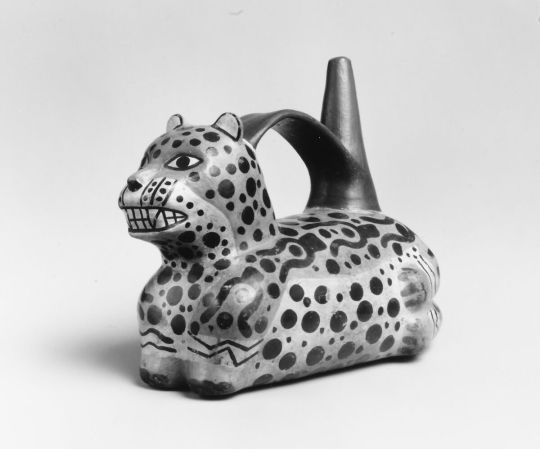
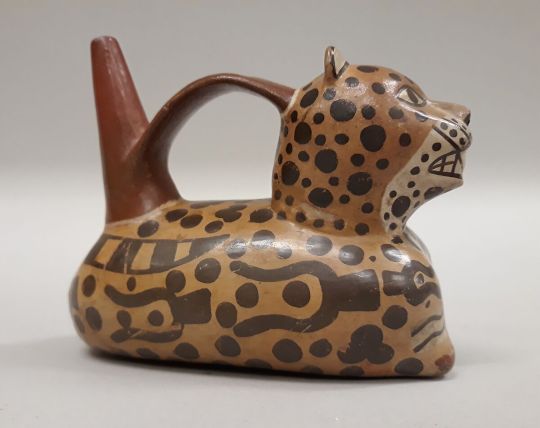
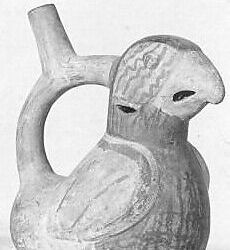

Artist Archive: Healing sound baths in Guadalupe Maravilla's body-of-work exhibition Luz y fuerza (2021)
Exhibition descriptions (from MOMA's website): ""I create new mythologies that take the form of real and fictionalised rituals based on my own lived experiences," says Guadalupe Maravilla. Two events from the artist’s life animate his work most of all: emigrating from his native El Salvador to the United States as an unaccompanied, undocumented eight-year-old and, later, surviving cancer. From this personal history grows a multidisciplinary practice that addresses trauma, contagion, rehabilitation, and rebirth.
This gallery—whose Spanish title translates as "hope and strength"—features works inspired by Mesoamerican myths and Salvadoran traditions. The sculptures are made from natural materials and ready-made objects selected for their therapeutic, historical, symbolic, and aesthetic properties. Maravilla sees them as healing instruments he can activate—and often does, especially for people experiencing illness and other hardships.
Disease Thrower #5 is a sculpture, a shrine, a wearable headdress, and an acoustic instrument. Like all works in the Disease Thrower series, it is, according to the artist, a "healing machine," which can be activated to create a sound bath with curative potential. It is made from both natural materials, such as straw and loofah, and man-made objects that Maravilla collected while retracing parts of the migratory route from El Salvador to the United States he took as a child. The work also includes anatomical models: one of a breast, another of a malignant tumour.
While undergoing treatment for cancer, Maravilla was introduced to sound therapy, a healing practice that uses vibrations produced by instruments. According to the artist, this practice “cleanse[s] the water in our bodies, which can carry stress, impurities, and, in some cases, diseases.” Now a trained sound healer, Maravilla regularly holds therapeutic sound baths for undocumented immigrants, cancer patients, and others in need. The gongs are tuned to specific frequencies intended to resonate with the moon and other planets in our solar system. Over the course of this exhibition, the artist will be regularly activating the sculptures in immersive sound bath sessions that visitors can sign up to attend."
Sound as healing/mediative?
Interaction to produce sound may not be limited to blowing air into hollow objects.
Luz y fuerza (multiple dates, sculptural body of work installation with performance)

Disease Thrower #5 (2019, sculpture - Gong, glass, steel, wood, glue mixture, cotton, wood, plastic, loofah, paint, straw, Florida Water, and objects collected from a ritual retracing the artist's original migration route)







#sca projects#year 3 art studio project 2#aa sca yr 3 sem 2 week 2#aa sca yr 3 sem 2 week 1#sca usyd new contemporaries grad show
0 notes
Text

Thelma Schoonmaker
Legendary Film Editor Celebrates Late Husband Michael Powell by Debuting The Doc "Made in England: The Films of Powell and Pressburger" at Tribeca Fest and More
By Brad Balfour
Maybe I should have attended the opening night screening of Black Narcissus when Oscar-winning director Martin Scorsese introduced the Museum of Modern Art's [MoMA] retrospective of Michael Powell and Emeric Pressberger films, but I didn't. Instead, I made it the next night to see legendary film editor, Thelma Schoonmaker, share her thoughts about Powell – her late husband – when the institution screened Made in England: The Films of Powell and Pressburger.
But hell, Marty was the sole narrator of this definitive documentary, so we hear him speak throughout a whole film celebrating the late Michael Powell and his partner, Emeric Pressburger, directed by David Hinton. In fact, Schoonmaker was introduced to Powell by Scorsese and his London-based film producer, Frixos Constantine. The couple were married from May 19, 1984, until his death in 1990. Since they had no children, Schoonmaker has been devoting herself to honoring and preserving the legacy of the many classic films that Powell directed.
Born in January 1940, this American film editor is best known for her five decades-long collaboration with Scorsese. Schoonmaker started working with Scorsese on his 1967 debut feature film, Who's That Knocking at My Door, and has edited all of his films since 1980's Raging Bull. Awarded many accolades, she has won three Academy Awards, two BAFTA Awards, and four ACE Eddie Awards. The 84-year-old has been honored with a British Film Institute Fellowship in 1997, the Golden Lion for Lifetime Achievement in 2014, and the BAFTA Fellowship in 2019.
In close collaboration with the British Film Institute (BFI), MoMA has been screening a comprehensive retrospective honoring this legendary filmmaking duo, creators of such classic films as The Red Shoes, A Matter of Life and Death and Black Narcissus.
Powell's controversial 1960 film Peeping Tom was so vilified on first release that it seriously damaged his career, but it's now considered a classic and a contender for the first "slasher movie." Besides Scorsese, many renowned filmmakers such as Francis Ford Coppola and George A. Romero have cited Powell as an influence.
In 1981, he received the BAFTA Fellowship along with partner Pressburger – the highest honor the British Academy of Film and Television Arts can bestow upon filmmakers. This series – the largest and most wide-ranging exploration of their work ever undertaken – celebrates the duo's cultural legacy and enduring influence. It features several 35mm prints, as well as new digital restorations of such Powell and Pressburger classics as The Small Back Room, The Life and Death of Colonel Blimp and The Tales of Hoffmann. Rarely screened films from Powell's late period will include Oh... Rosalinda!!, The Battle of the River Plate, Peeping Tom, and his long-unavailable 1963 adaptation of Bela Bartok's opera, Bluebeard's Castle. The latter two are newly restored by the BFI National Archive and the Film Foundation.
These true cinematic visionaries and innovators worked together on 24 films between 1939 and 1972, with Powell directing and Pressburger responsible for the scripts – though their duties blended often enough. For the films they produced together as The Archers, their credit reads "Directed and written by Michael Powell and Emeric Pressburger." The Archers worked with an exceptionally talented group of longtime collaborators who helped to craft and deliver their narrative worlds.
When Schoonmaker introduced the doc at MoMA, she offered these comments:
"I'm very glad that you are going to have a chance to see what it's like when I work with Marty. From the time I met him, he talked about the films of Powell and Pressburger. And when videos finally came around, he would send me home with one from the editing room so I could actually see why he was so excited. Of course, when I saw the films, I became as excited as he was. When he introduced me to Michael Powell at a dinner, while we were editing Raging Bull, I was stunned by him. "Much to the amazement of everyone, including Michael and myself, we began a relationship and eventually married. Michael was with us in New York from The King of Comedy until the film Goodfellas. He loved being back in the film world, and his presence meant so much to Marty as you will see in the documentary. So here's just a few notes, [then] we can get into the documentary about Michael's time with us in New York.
"We have all these great masterpieces to try and get down to a length that's reasonable. Michael would stop me on the street in New York sometimes and demand indignantly, "Why isn't Mean Streets being run every day somewhere in New York City?" He thought it was a masterpiece. He's right.
"Michael gave us the ending for After Hours. We didn't have a strong ending, and some people were giving us ideas like Cheech and Chong should fly away in a balloon. But Michael said no. Richard Dunn has to go back to the hell where we first saw him, teaching someone how to use a computer when what he really wants to do is write a great American novel. That's what Marty shot.
"When The Last Temptation of Christ was under such severe attack even before it was released, we had to have bodyguards for Marty. Marty finally let Michael see an almost finished edit of the film. He was always so worried about showing Michael any edits of our films because he said if he doesn't like it, I'm going to jump out the window. At the end, Michael stood up and there were tears streaming down his face. And I thought, what an incredible gift that was for Marty to be given at that terrible time.
"Most importantly, when Marty couldn't sell Goodfellas to the studios, if you can believe that, because they said he had to take the drugs out. He said, 'I can't.' That's the story. So I think that's in the editing room when I told Michael about it. He got very upset. He said he was ferociously protective of Marty's artistic rights because of what he, himself, had suffered. "And he told me to read him the script. When I finished, he said, get Marty on the phone. When I did, he said to Marty, "This is the best script I've read in 20 years. You have to make it." Marty went in one last time and got it made. Can you imagine if Goodfellas had never been made? But Michael did not live to see it.
"In return, what Marty has done for Michael and Emeric, is so enormous. Nobody's done as much as him to bring the films of Powell and Pressburger back from oblivion, in which they lingered for more than 20 years. He brought Michael Powell to the US, took him to film festivals where he got awards, entered Peeping Tom into the New York Film Festival in 1980, arranged for its re-release in America. And through his film foundation, he has raised the funds to restore eight of the Powell-Pressburger films. That is only a small list of what he has done through the years.

"So when Nick Varley, one of the producers of Made in England: the Films of Powell and Pressburger, suggested making a documentary about them, Marty and I were thrilled. We knew that it should be directed by David Hinton, who had already made a lovely film for the South Bank show on British TV about Michael Powell, when he was still alive and when his autobiography was published. Hinton took everything Marty had ever said or written about Powell and Pressburger and in conjunction with Marty, skillfully created the beautiful script you are about to see.
"David also insisted that Marty should be the only host in the documentary. No talking heads. How right he was. When Marty and I finished working on that little film, Killers of the Flower Moon, We joined into a wonderful collaboration with David and his editor Margarida Cartaxo. Edits flew back and forth across the Atlantic. It was a great joy for me to be living with the great films that I loved so much. You'll see a long list of organizations that funded the documentary, for which we are very grateful. With special thanks to George Harrison's widow, Olivia, who came in at the end to give us a much-needed boost.
"Just in time, for there is an explosion of interest in the films of Powell and Pressburger around the world. The British Film Institute, at the end of last year, put on a major retrospective of their films. Large numbers of young people attended the packed screenings and events. Now, MoMA, collaborating with the BFI, has put on an equally major retrospective for you all to see.
“We are so grateful to Dave Kehr, Olivia Priedite, and Sean Egan for the huge job of getting 50 films here for us all. And because of the amazing interest in the documentary, it is being distributed around the world, even in Beijing, where they screened it three times. We are so grateful to Altitude Movie and Cohen Media for making this possible.
"To end, I want to give my undying thanks to Marty, for letting me help him edit 22 of his movies, for initiating me into the Powell-Pressburger cult and for giving me the most wonderful husband in the world."
In addition, after Tribeca Festival debuted Made in England/The Films of Powell & Pressburger, MoMA's retrospective began. In presenting the doc there, Schoonmaker answered a few questions from a moderator about the film:
What is it like watching this?
Oh, it's so emotional. This film was made with quite a few people who really love Powell. It came out of years of Marty sending me home with videos of their movies and educating me about them and talking about them all the time. The producer of this film, Nick Varley, suggested to me that we make a documentary about it because of the wonderful celebration of Powell and Pressburger last year in England, in which I participated a lot.
Now MoMA is doing exactly the same celebration. They're going to run 50 films of these men. I never get tired of these movies and was so thrilled to be part of it. Marty's deep emotion about this movie is just what makes it so strong. Nobody ever did more to bring Powell and Pressburger back to the world than Marty. Many other people – Ian Christie, Kevin Goff Yates, Bertrand Tavernier – did great work to bring it back. But it was Marty who really, because of his ability to create publicity for them, made sure that the Museum of Modern Art ran a retrospective many years ago. Getting Peeping Tom reissued, all these things Marty did. Then he introduced my husband to me. It's an amazing thing to share with you all. And I do hope you'll go and see things at the Museum of Modern Art. Yes, definitely.

This is such a fascinating documentary, and it's very much a love story from Scorsese to them.
When I went to the celebration in England, there were so many young people there. I would look out at the audience, and half of them would be young people. They are coming in droves to these meetings. They're rediscovering them. I went up to Toronto to show this documentary, and after that they ran 10 films of Powell and Pressburger. They said it was packed with young people. Michael and Emmerich would be so thrilled to know that. Any time would have been the right time, but we seem to have accidentally hit a particular moment. That is wonderful.
Talk a little bit about the decision to tell the story of Powell and Pressberger's career through the lens of another filmmaker?
I think David – this movie's wonderful director – said that he wanted Marty to be the host. He didn't want a lot of talking heads. But he said, "No, I just want one person. I want Marty to do it." Of course, we agreed. I think he was absolutely right.
He's been a champion for their films for such a long time. you can really feel the love and connection to their films through his films.
Yes, I think he's probably one of the best working filmmakers who can talk about film.
You made an interesting choice with the film to highlight just a few of the films. Do you think that there is one film that you could pick that is the most meaningful or most special to you from Powell and Pressburger?
I hate that question because that's like saying, which of your children do you like best? I love them all. But my personal favorite is The Life and Death of Colonel Blimp, which I accidentally saw when I was 15. We weren't allowed to watch TV except when our mother chose what we should watch at night. But my mother worked as a nursery schoolteacher, and I got home before her from high school, and I turned on this wonderful million-dollar movie that Marty talks about in the documentary where they ran the same film nine times in one week. Marty would try and watch them nine times unless his mother got fed up and stopped him. I just happened to turn on the TV and there was this amazing film. I will never forget it. It just marked me so deeply. Little did I know that I would, many years later, meet the director and marry him.
Michael's personal favorite was A Matter of Life and Death. He loved being a magician and he could do anything he wanted in that movie. Create heaven and earth, forget all about continuity and the things we're supposed to do when we make films. Just do what was right. Of course, Rex Ingram – the director that he worked with at the Victorine Studios when he was young – had inspired him with this love of magic. So that was his favorite.
Made in England: The Films of Powell & Pressburger Opens Friday, July 12th
Q&As with Thelma Schoonmaker, 7/12 & 7/13
The Quad
34 W 13th St.
New York, NY 10011
Contact: [email protected]
Copyright ©2024 PopEntertainment.com. All rights reserved. Posted: July 12, 2024.
Photo #1 by Dan Diaz © 2024. All rights reserved.
Photos #2 & 3 © 2024. Courtesy of Cohen Media Group. All rights reserved.
youtube
0 notes
Video
vimeo
Museum-Worthy from AICP on Vimeo.
It's Hard to make museum-worthy art. It's harder to make museum-worthy ads. Enter the 2024 #AICPAwards by 11:59pm PDT on Tuesday, March 12th. Winning work will join the film archive at MoMA.
AICP Awards Entry Site: aicpawards.awardcore.com
Production Co: O Positive
Executive Producers: Ralph Laucella & Marc Grill
Producer: Grayson Bithell
Director: Brian Billow
Director of Photography: Bob Yeoman
Head of Production: Devon Clark
Executive Producer: Ken Licata
Production Supervisors: Deryck Highbridge, Ivan Zigas
Production Coodinator: Nicolas Laucella
1st AD: Paul Norman
2nd AD: Don Johnson
Creative Concepts & Consulting: BBDO
ECD, Writer: Marcelo Nogueira
ECD, Writer: Peter Kain
SCD, Writer: Dan Oliva
SCD, Writer: Scott Mahoney
CCO of the Americas: Chris Beresford-Hill
Editorial: Cutters
Managing Director: Craig Duncan
Executive Producer: Heather Richardson
Producer: Brittany Maddock
Editors: John Dingfield & Aaron Kiser
Editorial Assistant: Benjamin Porter
Color: Company 3
Head of Production: Blake Rice
Producer: Nick Krasnic
Colorist: Jenny Montgomery
Finish: Flavor
Managing Director: Neal Cohen
Executive Producer: Kate Smith
Producer: Brittany Maddock
Finish: Ryan Esboldt & Rob Churchill
Audio/Mix: Another Country
Managing Director: Tim Konn
Executive Producer: Louise Rider
Producer: Josh Hunnicutt
Sound Designer/Mixer: Logan Vines
Audio Assistant: Nora Strickstein
Additional Production Credits
Camera
B Cam Op: Eric Laudadio
1st AC – A Cam: Riley Keeton
1st AC – B Cam: Kyle Petitjean
2nd AC: William Hayes
DIT: Matt Love
Lighting
Chief Lighting Tech: Jeremy Launais
ACLT: Adrienne Subia
SLT: Anthony Peluso
SLT: Hootly Weedn
Grip
Key Grip: Robert Arroyo
BB Grip: Chad Pearce
Grip: Colby Dunford
Grip: Keith Markham
Art Department
Production Designer: Maia Javan
Art Dept Coordinator: Quentin Burchill
Set Decorator: Lulu Stewart
Prop Master: Matt Huish
Leadman: Chad Axman
Set Dresser: Roger Shay Barnickle
Set Dresser: Donald Ghio
Set Dresser: James Axle
Set Dresser: Collin Pulsipher
Set Dresser: Ryan Wallace
Script / Sound / VTR
Script Supervisor: Kristen Calabrese
Sound Mixer: Joe Hettinger
Boom Operator: Lucien Eagle-Jack
VTR: Tom Myrick
Make Up / Wardrobe
Key Make Up: Linda Barcojo
1st Make Up: Jennifer Gerber
2nd Make Up: Theresa Broadnax
3rd Make Up: Anna Novikova
Key Costumer: Laura Eckert
1st Asst Costumer: Craig Ryan
2nd Asst Costumer: Jed Carter
Location / Transportation
Location Manager: David Nakata
Gang Boss: Craig Ash
Electric Driver: Daniel (DJ) Hausfeld
Grip Driver: Gary Cheek
Art 5 Ton Driver: Darren Giarrusso
Chef Driver: Jesus de los Santos
Production Support
Craft Service: Danny Tilbury
Craft Service: Jayna Mims
Medic: Axel Montoya
On Set Layout: James Galeana
Site Rep: Christina Rusboldt
Compliance Coord.: Marques Jackson
Production Assistants
PA – P: Steve Rea
PA – W: Danny Kellermeyer
PA – C: Oscar Reyna
PAs: Honour Norman, Jackson Shane, Steven McAnnally, Caris Yeoman, Colby LeMaster, Ryan Llanes, Riley Aronson
0 notes
Video
vimeo
Museum-Worthy from AICP on Vimeo.
It's Hard to make museum-worthy art. It's harder to make museum-worthy ads. Enter the 2024 #AICPAwards by 11:59pm PDT on Tuesday, March 12th. Winning work will join the film archive at MoMA.
AICP Awards Entry Site: aicpawards.awardcore.com
Production Co: O Positive
Executive Producers: Ralph Laucella & Marc Grill
Producer: Grayson Bithell
Director: Brian Billow
Director of Photography: Bob Yeoman
Head of Production: Devon Clark
Executive Producer: Ken Licata
Production Supervisors: Deryck Highbridge, Ivan Zigas
Production Coodinator: Nicolas Laucella
1st AD: Paul Norman
2nd AD: Don Johnson
Creative Concepts & Consulting: BBDO
ECD, Writer: Marcelo Nogueira
ECD, Writer: Peter Kain
SCD, Writer: Dan Oliva
SCD, Writer: Scott Mahoney
CCO of the Americas: Chris Beresford-Hill
Editorial: Cutters
Managing Director: Craig Duncan
Executive Producer: Heather Richardson
Producer: Brittany Maddock
Editors: John Dingfield & Aaron Kiser
Editorial Assistant: Benjamin Porter
Color: Company 3
Head of Production: Blake Rice
Producer: Nick Krasnic
Colorist: Jenny Montgomery
Finish: Flavor
Managing Director: Neal Cohen
Executive Producer: Kate Smith
Producer: Brittany Maddock
Finish: Ryan Esboldt & Rob Churchill
Audio/Mix: Another Country
Managing Director: Tim Konn
Executive Producer: Louise Rider
Producer: Josh Hunnicutt
Sound Designer/Mixer: Logan Vines
Audio Assistant: Nora Strickstein
Additional Production Credits
Camera
B Cam Op: Eric Laudadio
1st AC – A Cam: Riley Keeton
1st AC – B Cam: Kyle Petitjean
2nd AC: William Hayes
DIT: Matt Love
Lighting
Chief Lighting Tech: Jeremy Launais
ACLT: Adrienne Subia
SLT: Anthony Peluso
SLT: Hootly Weedn
Grip
Key Grip: Robert Arroyo
BB Grip: Chad Pearce
Grip: Colby Dunford
Grip: Keith Markham
Art Department
Production Designer: Maia Javan
Art Dept Coordinator: Quentin Burchill
Set Decorator: Lulu Stewart
Prop Master: Matt Huish
Leadman: Chad Axman
Set Dresser: Roger Shay Barnickle
Set Dresser: Donald Ghio
Set Dresser: James Axle
Set Dresser: Collin Pulsipher
Set Dresser: Ryan Wallace
Script / Sound / VTR
Script Supervisor: Kristen Calabrese
Sound Mixer: Joe Hettinger
Boom Operator: Lucien Eagle-Jack
VTR: Tom Myrick
Make Up / Wardrobe
Key Make Up: Linda Barcojo
1st Make Up: Jennifer Gerber
2nd Make Up: Theresa Broadnax
3rd Make Up: Anna Novikova
Key Costumer: Laura Eckert
1st Asst Costumer: Craig Ryan
2nd Asst Costumer: Jed Carter
Location / Transportation
Location Manager: David Nakata
Gang Boss: Craig Ash
Electric Driver: Daniel (DJ) Hausfeld
Grip Driver: Gary Cheek
Art 5 Ton Driver: Darren Giarrusso
Chef Driver: Jesus de los Santos
Production Support
Craft Service: Danny Tilbury
Craft Service: Jayna Mims
Medic: Axel Montoya
On Set Layout: James Galeana
Site Rep: Christina Rusboldt
Compliance Coord.: Marques Jackson
Production Assistants
PA – P: Steve Rea
PA – W: Danny Kellermeyer
PA – C: Oscar Reyna
PAs: Honour Norman, Jackson Shane, Steven McAnnally, Caris Yeoman, Colby LeMaster, Ryan Llanes, Riley Aronson
0 notes
Text
Max Goldberg on the slide lecture by Jerome Hiler for Film Comment Magazine
Heaven Can Wait was written in celebration of Jerome’s presentation of the slide lecture at MoMA to open the film series, The Illuminated Hours, a celebration of the films of Nathaniel Dorsky and Jerome Hiler at MoMA and the Anthology Film Archives.
This “live" presentation at MoMA is on the evening of Thursday, May 9th, 2024 at 7 in the evening.
Cinema Before 1300
By Max Goldberg
Early in Cinema Before 1300, Jerome Hiler’s feature-length survey of medieval stained glass, the filmmaker explains that he first saw Chartres Cathedral in the pages of a book gifted to him in the mid-1960s by Charles Boultenhouse and Parker Tyler, elders of the era’s New York avant-garde. It took another 25 years or so for Hiler to travel to Europe to see the cathedral for himself. He brought a Nikon to photograph stained glass across France and England, sharing his 35mm slides with friends and, eventually, in a few public lectures. After one such presentation at the Harvard Film Archive in 2017, Hiler was persuaded by HFA Director Haden Guest to turn his slides into the discursive film that will show at the Museum of Modern Art next week, ahead of several programs of his and his partner Nathaniel Dorsky’s lush experimental films.
It feels odd to call Cinema Before 1300 an essay film, since the term has come to be associated with a riddling, theory-minded style. Hiler’s approach is closer to the classical ideal of the essay: lucid, companionable, amateur in the original sense (as in, “one who loves”). He is perfectly willing to concede the limits of his knowledge—“I don’t know what the significance of that is,” he says of the recurring figure of a king tugging at his collar like “an ancestor of Rodney Dangerfield”—but his exploration is nevertheless grounded in years of close looking and practical know-how. (In addition to making intensely lyrical films, Hiler has worked extensively, if privately, with glass.)
For those who might demur at the prospect of an old-school art-history lecture, it ought to be said that Hiler’s photographs are totally gorgeous. His framing shows the windows to great advantage, and the saturated color of his original 35mm slides is a perfect match for the brilliance of the stained glass. The narration approaches this visual index from a variety of angles: with a theological gloss on Pseudo-Dionysius the Areopagite’s idea of “light from divine darkness,” for instance, or a historical note on the cataclysmic fire that ripped through Chartres in 1194. Hiler muses on how the windows change with weather and time of day, making “many windows out of one”; offers a technical explanation of the perceptual effects of halation; argues for leaving the marks of age in any restoration; and marvels at all the pictorial detail that couldn’t have been seen by congregants—just as, we might note, the subtleties of his own richly detailed films invariably escape a first viewing.
It is rather amazing that a work so full of information should also feel so serene. Similar to the way in which large stained-glass windows are made from many smaller pieces of glass, Hiler divides Cinema Before 1300 into discrete sequences, each comprising a paragraph’s worth of narration and a few slides of the glories of Chartres, Saint-Denis, Canterbury, and other cathedrals. At the end of each stanza, Hiler finishes his talk and pauses for a few beats, allowing the glass to have the last word, and then repairs to darkness. He uses interleaving blackouts to the same rhythmic, almost respiratory effect in his lyrical films, but here the technique doubles back to the imagined space of the cathedral. “Darkness is the sacred setting that film and stained glass share,” Hiler reflects over an extended interval of black toward the beginning of the film. “Our overview begins in the early 12th century, a time when darkness was imbued with a powerful spiritual significance . . . It was not the darkness of negation; it was pregnant, life-giving, limitless, and timeless.”
The connection between the cathedral and the cinema goes well beyond the shared spiritual interplay of light and dark: there is also the sequential nature of early narrative art; the saints as movie stars, with “personalities . . . known, loved, and adopted by the populace”; the way the likeness of a window’s sponsor functioned like an executive-producer credit; and how certain tropes, like the devil perched on a person’s shoulder, have passed through time virtually unchanged. Leaving narrative aside, Hiler can’t resist mentioning how five densely patterned windows at York Minster resemble Stan Brakhage filmstrips, and we might just as easily see the mandala-minded Harry Smith in the alchemist’s rose at Notre-Dame or the 3D-obsessed Ken Jacobs in the frequently used blues and reds that produce a mesmerizing sense of “dimension without perspective.” Perhaps most salient is the medieval ideal of claritas, which, per Hiler, creates “an environment that [awakens] the mind through the senses”—very close indeed to the “devotional cinema” explored in Dorsky’s slim book of the same name.
In this telling, the first “death of cinema” can be dated back to 1241, when a Council of the Sorbonne ruling indirectly led to clear windows flooding cathedrals with daylight, banishing the necessary conditions for stained glass to work its magic. The fate of the cathedrals readily brings to mind the devolution of the great movie palaces, including, in just the past year, the Castro Theatre in San Francisco, Hiler and Dorsky’s longtime hometown. More particular to Hiler’s own craft, the historical subject also lends itself to thinking about what it means to stay true to an artistic lineage when the tide goes out. Hiler’s lament, late in Cinema Before 1300, that he watches his “world of culture and values disappear in daily installments” needs to be taken alongside the film’s testament to the remarkable persistence of material culture even through the most trying circumstances.
In a long interview included in the recent book Illuminated Hours: The Early Cinema of Nathaniel Dorsky and Jerome Hiler, Hiler recalls that his very first shot with a movie camera was of a rose-colored piece of glass. A friend advised that instead of actually filming stained glass, Hiler should make his films themselves “be like stained glass.” Viewers can judge his success in the upcoming programs celebrating the book at MoMA and Anthology Film Archives, but Cinema Before 1300, like Hiler’s earlier documentary work, stands on its own two feet. A few weeks after watching the film at home, I went up to the Cloisters on a rainy day and found the stained-glass figures in the Early Gothic Room waiting for me, perfectly assured yet surprisingly familiar. Which is to say that Cinema Before 1300 leaves a long-lived afterimage—and its own measure of sanctuary.
Max Goldberg is an archivist and writer based in the Boston area.
#jerome hiler#nathaniel dorsky#max goldberg#film comment#film comment magazine#articles#illuminated hours
0 notes
Text



"Betye Saar has become an icon, with an exhibition at MoMA and a show at LACMA, and yet her episode begins with a confession.
“It took a long time, even for me to say, ‘I am an artist,’” she tells Nemser in 1975.
An overlooked figure in many art history textbooks, the (podcast) episode focusing on Saar highlights the role of Black artists during the Civil Rights movement and the Los Angeles community they created during the 1970s. Working with found objects and #assemblage, Saar collected items imbued with racist imagery and mixed them together with personal snapshots and mystical talismans to create charged readymades." via @hyperallergic 2020
Portrait of Betye Saar, 1970 (image courtesy the artist and Roberts Projects, Los Angeles, California, photo by Bob Namamura)
Betye Saar, Omen (1967), mixed media assemblage, 12.8 x 9.25 x 3.1 in. (courtesy the artist and Roberts Projects, Los Angeles, California, photo by Robert Wedemeyer)
Betye Saar, The Liberation of Aunt Jemima, 1972 mixed media assemblage, 11.75 x 8 x 2.75 in. (Berkeley Art Museum and Pacific Film Archive, Berkeley, California, courtesy the artist and Roberts Projects, Los Angeles, California, photo by Benjamin Blackwell)
source: A Podcast on Radical Women Unearths Rare Interviews With Alice Neel, Betye Saar, and More by Alissa Guzman (2020) The Recording Artists podcast, hosted by Helen Molesworth, explores what it has meant to be a woman and artist through the lives of six iconic artists.
see: https://hyperallergic.com/538260/recording-artists-radical-women-getty-podcast/
#womensart #artbywomen #PalianShow #BlackArtist #BlackHerStory #ArtHerstory
0 notes
Text
RÄ DI MARTINO
Rä di Martino (Rome, 1975) studied at Chelsea College of Art and Slade School of Art in London, she has lived in New York, from 2005 to 2010, and she now lives and works in Rome. Her work has been shown in many institutions like Tate Modern (London); MoMA PS1 (NY); Palazzo Grassi (Venice); GAM and Fondazione Sandretto (Turin); MACRO and MAXXI (Rome); Museion (Bolzano); MCA (Chicago); Magasin (Grenoble); PAC and HangarBicocca (Milan). She has participated to a large number of film festivals like Locarno Film Festival; VIPER Basel; Transmediale.04; New York Underground Film Festival; Kasseler Dokfest; Torino Film Festival and Venice Film Festival, where she won, in 2014, the SIAE Award and Gillo Pontecorvo Award and a Nastro d’Argento with the medium length documentary The Show MAS Go On (2014). Her first feature film Controfigura (2017) was premiered at Venice Film Festival. In 2018 she has developed the project AFTERALL with the MIBAC Italian Council Award. She won the first edition of the Lio Capital Art Prize (Milan, 2020) with L'eccezione (2019), commissioned by Museo Novecento (Florence). In 2021 she filmed a documentary for ARTE, Il giardino che non c'è (inspired by Il giardino dei Finzi-Contini) and a documentary film about the history of Teatro di Pontedera (Fuori dai teatri). In 2022 opens her solo exhibition at Forte Belvedere in Florence and a solo show in collaboration with the Carmelo Bene archive.

0 notes
Text
CRITICAL THINKING B
Week 4+5: Field Trip and Analyse Artistic Traditions and Lineages
The role of the museum is to showcase arts and artists in diverse mediums and experiences. Curation of exhibits from different artists internationally and locally. Bringing a Community that is interested in the arts or friends and family to enjoy a calming day appreciating arts. As it can be poetic in our everyday lives or understanding of culture and history. The museum preserves traditional art and Knowledge. It is quiet and inspirational. Displaying archives in time.



Liu Kuo-sung: Experimentation as Method exhibition really caught my attention It was really surreal that his works were painted with Chinese ink. His inspiration was travel landscapes in China. It was really calming seeing all his works as the line work, compositions and brush strokes are all so precise. "In the midst of a beautiful spring" painting is really poetic as it is an abstraction of spring and looks like reflections on water. Especially with the "Snowscapes reaching beyond the clouds" black and white painting it looked like a photograph split in four. The canvases are really big too it felt like I could teleport in there.

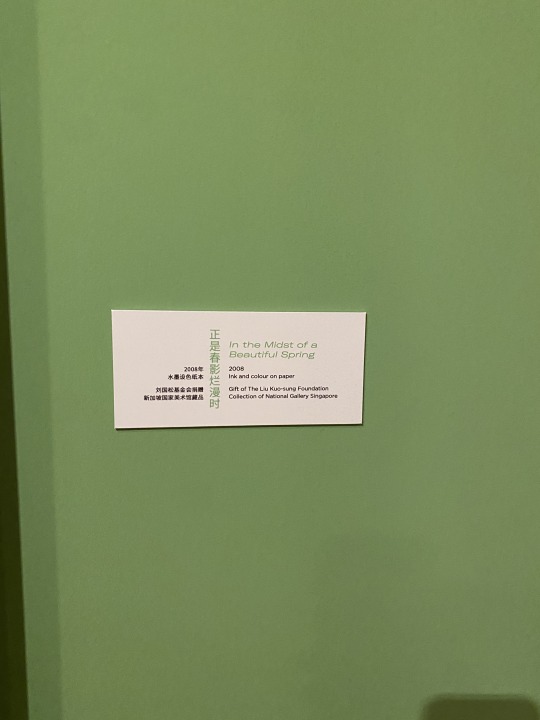



Ed Ruscha / Now then an exhibition in MoMA ( Museum of Modern Art ) shows the history of photography documentation and different mediums in prints or film of Los Angeles city from 1974-2010 as well as typography. Starting in 1966 Ed Ruscha mounted his camera in the back of a pickup truck and photographed ( in street level perspective ) every building in the sunset strip returning to the place again and again and also other streets. His archives of the city are a good resource on the city's history of how the places evolved, the design of typography, logos, and music. From visual types to visual places.

youtube
Word count: 287
References (MLA STYLE):
"National Gallery Singapore pictures" - taken by me in 2019 and 2020.
"National Language Class" 1959 -Chua Mia Tee
oil on canvas
"In the midst of a beautiful spring" 2008 - Luo Kuo Sung
Ink and colour on paper
"Snowscapes reaching beyond the clouds" 2020- Luo Kuo sung
Ink and colour on paper
https://www.nationalgallery.sg/
"Ed Ruscha / Now then website picture" - 14 Nov 2023 MoMa
"LA Stories: Urbanism, Music, and AI in Ed Ruscha’s Archive" - 14 Sept 2023 Getty Research Institute
#art#nationalgallerysingapore#museum#exhibitions#arts#artists#chuamiatee#luokuosung#chineseink#nationallanguageclass#gelleryvisit#fieldtrip#community#diverse#appreciation#culture#history#traditional#modern#curation#inspirational#experiences#mediums#Analyse#abstract#contemporary art#painting#poetic#Youtube
1 note
·
View note
Text
MoMA Announces A View from the Vaults 2023: A Fox Dozen
Sunnyside Up. 1929. USA. Directed by David Butler. The Museum of Modern Art Film Stills Archive
Founded in 1915 by the self-educated entrepreneur William Fox, the Fox Film Corporation became home to the most dazzling lineup of directorial talent in the studio era. As silent film transitioned into sound, Fox’s stable of directors included Frank Borzage, Allan Dwan, John Ford, Howard Hawks,…

View On WordPress
0 notes